Tedeschi is one of Italy’s premier wine estates. Fact is, in an area, that of the Valpolicella where two iconic estates (Quintarelli and Dal Forno) are rightly considered to be amongst Italy’s ten greatest, there are another eight-twelve that are exceptionally gifted and make outstanding wines. We will be featuring these excellent estates here on TerroirSense Wine Review over the course of the year (Masi, Tenuta Sant’Antonio, Speri, Brigaldara, Tommasi) as well as many other of the world’s greatest wineries. In the hope of getting closer to the way these producers think, to what sets them apart, to understand what their present is about and to learn what the future may hold. And of course, review some of their wines too.
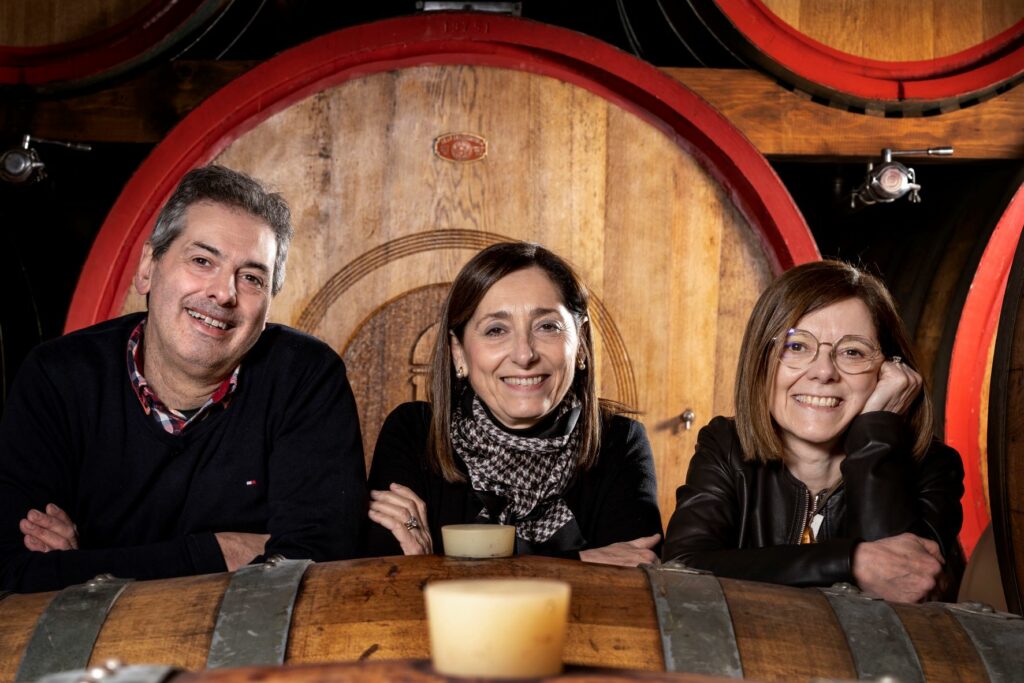
So now let’s have fun with Italy’s and the world’s very best wineries!
Recently, Ian D’Agata, TerroirSense Wine Review Editor-in-Chief, sat down with Sabrina Tedeschi, of the famous Tedeschi estate in Veneto, for a long interview as well as a quick question and answer session and tasting of some recent vintages of the estate’s wines. This is but a small part of that interesting encounter.
- Ian: Ciaooooo Sabrina! When was the estate founded?
Sabrina: The oldest document we have in the family dates back to1630, from which we learn of an ancestor buying land in Valpolicella. More complete and detailed documents date to 1824. Our historic family vineyard, the Monte Olmi, was bought in 1918 and we for sure made our first Amarone from there in 1964.
- Ian: What is your estate’s total number of hectares and what is that of those under vine? And by denomination and various properties your family owns?
Sabrina: Tedeschi owns 15 hectares in the Classica zone (including the Monte Olmi and the Fabriseria vineyards) and 33 hectares in the Valpolicella Orientale, where our Maternigo estate is located (in fact, the estate amounmts to, including fields and forest, to 84 hectares). I need to make something clear, because it is extremely important relative to Valpolicella and its wines: between the Classica and Orientale zones, 99% of all our vineyards are hillside vineyards.
- Ian: How many grape varieties and which ones do you grow?
Sabrina: Corvina, Corvinone, Rondinella, Oseleta, and Croatina dominate the youngest plantings, but we have a plethora of rare varieties in our older vineyards.
- Ian: How many different wines do you make?
Sabrina: Thirteen different wines.
- Capitel Fontana Recioto Della Valpolicella Docg Classico
- La Fabriseria Amarone Della Valpolicella Docg Classico Riserva
- Capitel Monte Olmi Amarone Della Valpolicella Docg Classico Riserva
- Maternigo Amarone Della Valpolicella Docg Riserva
- Marne 180 Amarone Della Valpolicella Docg
- Ansari Amarone Della Valpolicella Docg
- La Fabriseria Valpolicella Doc Classico Superiore
- Maternigo Valpolicella Doc Superiore
- Capitel San Rocco Valpolicella Ripasso Doc Superiore
- Capitel Nicalo’ Valpolicella Doc Superiore
- Corasco Rosso Trevenezie Igt
- Valpolicella Doc Superiore
- Lucchine Valpolicella Doc
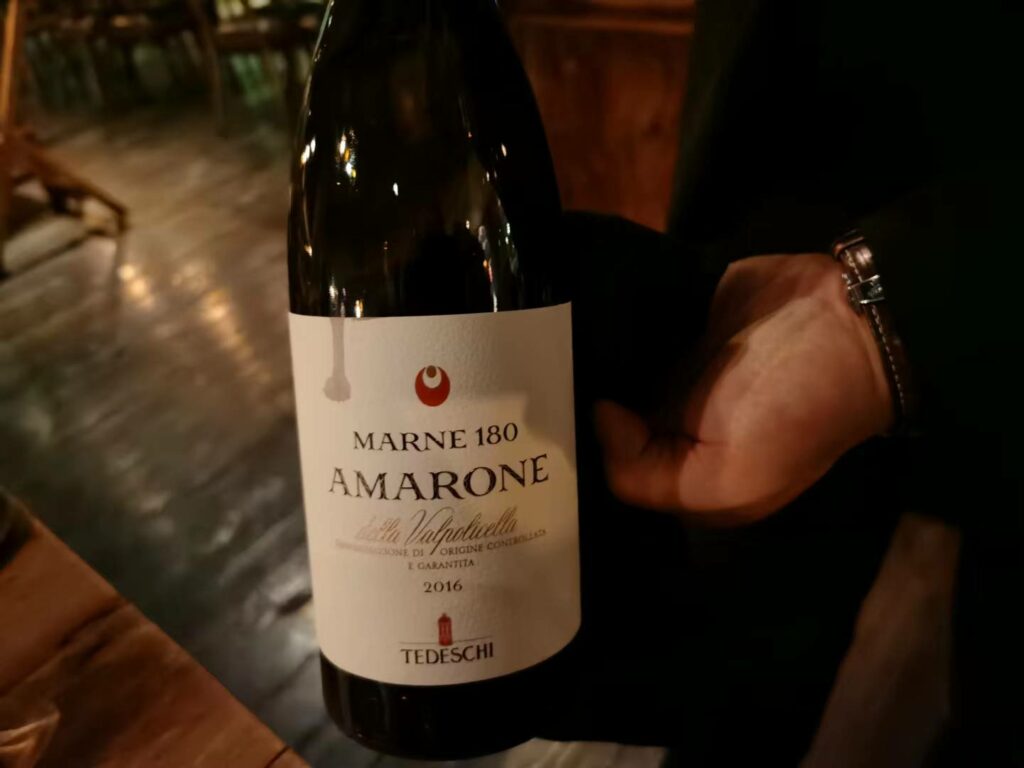
- Ian: What is the estate’s average number of bottles produced a year?
Sabrina: 500.000
- Ian: What is the first vintage you ever made of Amarone?
Sabrina: Like I said earlier, 1964, but that’s the one we have proof of. For sure, our family was already making Amarone before then.
- Ian: And the first vintage of Valpolicella?
Sabrina: That’s tougher to pinpoint, for sure before the 1960s. Otherwise our current Valpolciellas were born in the following years: Lucchine Valpolicella in 1978; Capitel Nicalò in 1984; Capitel San Rocco Ripasso in 1976 (this started out as a Vino da Tavola, then it became an IGT, and now it’s a DOC); La Fabriseria Valpolicella from 2006 (but we first made it in 1996, when it was an IGT); Maternigo Valpolicella in 2011.
- Ian: And the first one of Recioto (Recioto della Valpolicella)?
Sabrina: Now that’s EASY!!! Since always!
- Ian: Your estates owns vineyards in both the Valpolicella Classica and outside of the ‘Classica’ zone. I know what I think, but in general terms, what do YOU think are the biggest differences between the areas and the wines of the Valpolicella Classica and of the Valpantena and Valpolicella Orientale?
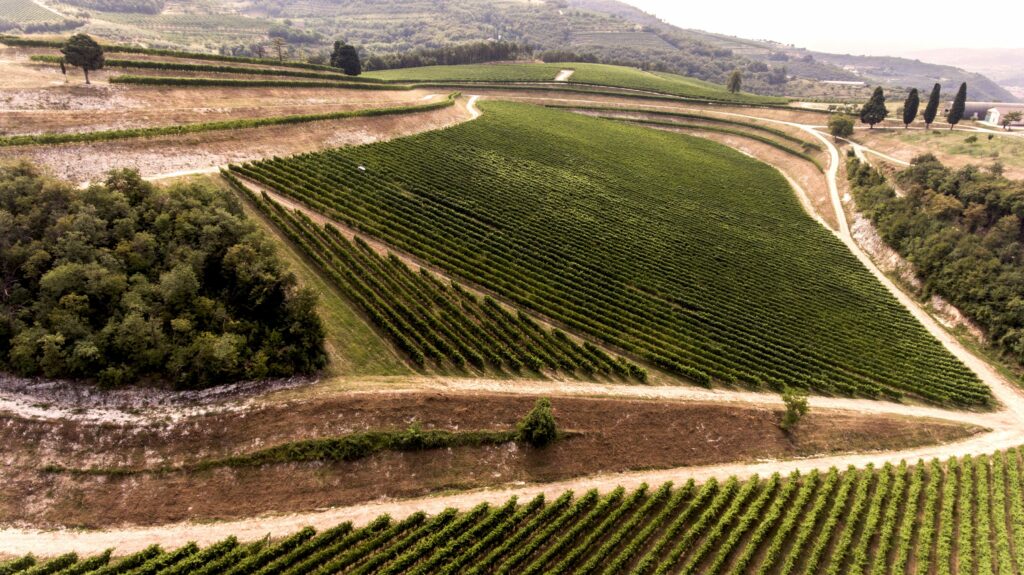
Sabrina: It’s not so easy to distinguish between the wines of each zone, because much has to do with the climate in Veneto; way up in Northern Italy, the weather can be quite variable from year to year. But based on my experience, I can say that:
- The Fumane valley gives wines that are fruitier and have a softer total acidity, or so it seems like when you taste the wines. Where the Fumane Valley broadens out towards the town of Sant’Ambrogio/San Giorgio, the wines suddenly become much bigger, more structured, but always with wonderful fruit presence and acidity levels.
- Marano gives wines of great aromatic complexity, and the wines strike me as being especially good in droughty years. Towards the town of San Pietro in Cariano, wines seem to be more elegant and tannins are generally silkier.
- Negrar gives some of the biggest wines, but not exaggeratedly so, and that age extremely well.
- Valpantena, which is not part of the Valpolicella Classica, gives wines that resemble those of Negrar, wines that can seem a little austere at first, perhaps not as concentrated as some others, but of noteworthy elegance (which admittedly, isn’t always a given everywhere else).
- In the eastern Valpolicella area (Valpolicella Orientale) the Mezzane Valley appears to give wines of great perfume and good concentration; but in all honesty, there it really depends on yields and the site. Terroir does speak there, and loudly. Either you make an effort and really reduce your yields or luck into a site like Maternigo that naturally tends to lower yields…in such cases, you achieve wines that have the aromatic clout of Marano and the body of Negrar. And I want to point out that it’s especially in the non-Classica area that the yield becomes all important relative to the quality of the finished wines. Knowing and understanding about the difference that hillside vineyards make in the quality of Valpolicella and Amarone wines is fundamental.
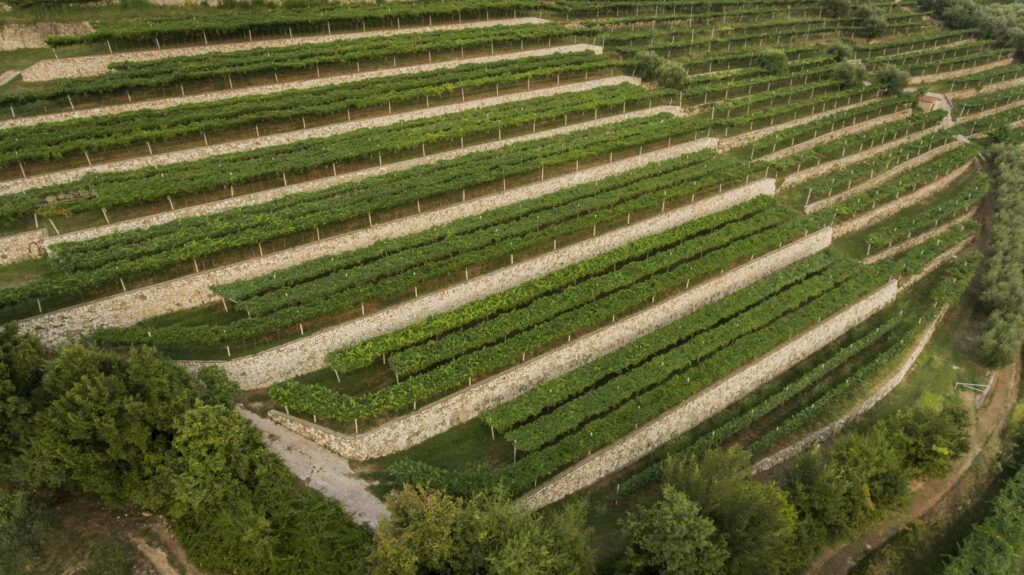
10. Ian: OK, let’s talk native wine grapes! But off course, I hear you thinking, it’s Ian talking… but in fact, a really unique thing about your estate hardly anybody knows is that you have always strongly believed in Rondinella, perhaps more so than others. In fact, it’s present even up to 30% in your various blends, when most people have it at 20% or less. Why do you like it? Because it’s so regular yielder or for the unique perfume it gives to the wines?
Sabrina: In truth, Rondinella gives the simplest of all our wines, but it depends: on calcareous soils it gives wines of real structure and size. I’ll tell you a secret that is a real scoop just for you at TerroirSense Wine Review: with our dad Lorenzo we once made an Amarone sperimentale, an experimental wine with only Rondinella. Really, 100% air-dried Rondinella! Clearly, we could never have sold it as an Amarone because there are precise guidelines to follow in making that wine, but we have always practiced research and studied our terroirs closely at Tedeschi. And as you in particualr know very well, grape varieties are a big part of terroir as the trick is not to plant just anything anywhere following someone else’s successful recipe but to tailor the right wine grape to the right terroir…and so we went ahead, and you know what? To this day we all remember it in the family as one of the best “Amarone” wines we have ever made! Go figure….
- Ian: And what about my personal love, Molinara? A lot of estates have done away with it, but to my way of thinking, it’s a huge mistake because it reduces Amarone (especially) to being a big fat alcohol-heavy wine with little spice, salinity and grace. OK, maybe I’m being too negative, but still. To my way of thinking, Molinara was only removed because of the fashion of the time asking for thicker-than-thick, low acid, black-as-all-heck wines that were anything but drinkable…. Once again, maybe I’m wrong; but then Quintarelli used to make a monovariety Molinara wine for the longest time, so I’m not exactly in bad company in thinking that the grape has much to offer. What are your thoughts on the matter?
Sabrina: In my experience, the real problem lies with the vegetative material: we just cannot find any interesting plants of Molinara anymore, and it’s even worse when you talk about clones. However, in small percentages, it can add typicity to the finished Valpolicella and Amarone wines. Ultimately, it boils down to the individual producer’s stylistic preferecnes. (Note from the TerroirSense Wine Review staff bureau: TerroirSense Wine Review will be publishing a major article on Molinara and Molinara-heavy wines later this year, a real first so don’t miss it).
- Ian: Speaking of grape varieties, you mention the use of Corvinone in your wines from Maternigo (and from the Classica vineyards too, of course), while rarer grape varieties such as Rossignola and Forselina only in the wines from the Classica zone… is this is because there are old vines of these rare native grapes in your Classica vineyards and when you planted in Maternigo the new holdings you chose not to go ahead with these old varieties? I imagine they must be very hard to find, even if you wanted to plant them. And finding them virus-free is probably even harder…
Sabrina: Some of those varieties, such as Rossignola and Forselina, require lots of space to grow well, and therefore need to be pergola- or canopy-trained … At the Maternigo estate we concentrated our efforts on Guyot-training our vines instead, limiting the canopy only to areas higher up in altitude. Therefore these are varieties that we find in our older, canopy-trained vineyards mostly.

- Ian: I know you also have growing in your vineyards still other rare native grapes such as Rossignola, Turchetta, Dindarerella, various Negraras, and Corbina, because I have seen them. Have you ever tried vinifying them on their own? I know Forselina gets mentioned in your Amarone Monte Olmi, but that’s maybe only because you have old vines of Forselina hanging on (literally) in that specific vineyard?
Sabrina: No, no, no we actually include these old varieties regularly in our Amarones Marne and Monte Olmi; it’s just that sometimes we forget to mention them because they amount to only a few percentage points of the final blend.
- Ian: Heyyyy, I’m not letting you off the hook that easily! Over the years, during my many visits to your estate and my vineyard walks with Riccardo, your brother, plus all the tastings I’ve done at the winery with you both, I know you were growing experimental rows of Turchetta and Marzemina Nera, that you had begun studying already ten years ago…what is happenning with those grapes? Have you gone ahead and vinified them on their own, yes or no?
Sabrina: Your memory scares me, Ian! In fact, after years of trials and study, we are now going ahead with planting rows of Corbina and Turchetta. In the past we went through trials, and I should add tribulations, in collaboration with the University and the Regione Veneto, that encouraged us along. Unfortunately, we chose the wrong rootstock, and the grapevines just didn’t produce much at all. I mean, we could never have made any wine commercially that way… So we had to start all over again. But to give you another scoop, since you ask and nobody else ever has: the Corbina we planted in Maternigo is an absolute revelation, confirming all the great things that had been written about this wine grape in centuries past and that is giving us what looks like will be just an amazing wine. [(NOTE to the reader: Corbina, not Corvina: the two are similarly-named grapes with totally different characteristics and history. For more information on Corbina, see my book: Native Wine Grapes of Italy (University of California Press, pages 502-503)].
- Ian: What do you and Riccardo think about the soils of the Valpolicella area? I documented this at length in my book Italy’s Native Wine Grape Terroirs (University of California Press), but perhaps more has been understood in the meantime? How do the soils differ in your estate’s holdings and how does each one influence the wines? For example, many people think that Amarone is the product of a technology and not a wine of terroir, but that’s simply not true, the grapes and where they come from is all-important. They are very much wines of terroir. What are your thoughts on the relative influence of the soil and geology (not to mention topography and altitude) on your different wines?
Sabrina: Let me limit my answer to three different Amarone wines, or this article will never finish!
Amarone Della Valpolicella DOCG Classico Riserva Capitel Monte Olmi
The Monte Olmi vineyard covers 2.5 hectares in the territory of the town of San Pietro in Cariano, in a hilly southwest-facing vineyard planted between 160-195 meters above sea level. From a geologic perspective, the area lies on calcareous marls and yellowish calcarenites that date back to the medium Eocene epoch. Calcium carbonate and clay are present there in about the same amount and account for the deep colour of the wines. They are also soils that keep vigour low and so the wines are naturally very concentrated. This is why our Amarone Monte Olmi starts off life as a rather austere wine and needs plenty of cellaring to show all it has to offer. It’s also especially characterized by a wealth of mentholated terpens that confer freshness and lift to what would otherwise be a very big wine, but that has a vibrant side thanks to its minty, spicy and citrus nuances. Credit must go to our dad Lorenzo who wanted to make just this kind of wine in Monte Olmi and it really is our flagship.
Amarone Della Valpolicella DOCG Riserva Maternigo
The Tenuta Maternigo extends over the territories of two communes, Tregnago and Mezzane di Sotto. This is a high hillside area, with vines planted facing south and southwest between 290 and 480 meters above sea level. The soil and subsoil are grey and pink calcareous marls and white and pick limestone dating back to the Cretaceous Era. Our studies have identified nine different soil units, with differences in depth, substrate nature, root penetrance and more. These different soils, planted with the same grapes, give totally different wines.
So to give you an example, our Amarone Maternigo is made with grapes from the Barila vineyard, planted at about 310 meters above sea level and facing south. The marly-calcareous soil there is grey-yellow, and offers great drainage. It is also a very well-ventilated site, with noteworthy diurnal temperature variations and delivers interesting phenol concentrations and excellent aromatic complexity in the grapes. Given also that it is a site of extremely low vigour, the resulting wine is very concentrated. The aromas are mainly due to the high norisoprenoid concentrations that really bring to the fore the red fruits mostly (but not only) of Corvinone, that here is about 40% of the blend. There’s also hints of sweet spices, but it’s really the fruit that dominates. In other words, Maternigo is an area that delivers freshness and aromatic complexity. We only make this wine in the better vintages.
Amarone Della Valpolicella DOCG Classico Riserva La Fabriseria
The Fabriseria vineyard extends for about seven hectares in the territory of two communes, Fumane and S.Ambrogio in Valpolicella. High hillside again, facing mostly southeast at 430 to 500 meters above sea level. Here the soil is made up of calcareous schists and calcarenites (all from the Cretaceous era) and that are mostly grey-yellow in colour. It’s not a very deep soil here, but the site is well-ventilated and gets quite cool at night. It’s a terroir that limits the breakdown of natural acids, better phenol concentration is typical and the production of very elegant aromas is commonplace. Limestone content here is very high (30%), but so is the iron oxide (wines of structure) and of sand (intense aromas and freshness). The carbon/nitrogen ratio is extremely high in this vineyard too, which means a very slow decomposition of any natural material that falls to the ground (stems, twigs, leaves) which in turn leads to an accumulation of organic debris over time that provides nourishment to the soil.
The Fabriseria vineyard is divided into two blocks: the upper one is the one we use to make our Amarone Fabriseria, mostly because we end up having higher concentrations of esters from there. We have red fruit aromas and flavours in the wine, but also of flowers, menthol, balsamic oils, cinnamon and cloves. Lots of structure for what is a rare wine, made only nine times from 1983 to today.
- Ian: Is there any other information you think might be important to mention about your estate so as to let our readers get to know you, Tedeschi, and your wines better?
Sabrina: We are proud to be among the leaders in an historical wine wine area such as is the Valpolicella. We believe in ecosustainability and in innovation, and have achieved certifications from organizations such as Biodiversity Friend and Equalitas. We are currently working very hard on the geo-typification of our grapes so as to tailor our wines in such a way that specific areas are planted to specific grapes. In other words, not just haphazardly, such as planting any area with any grapevine just because maybe three thousand kilometers away that grape might give a good wine. We want our wines to improve, but also to showcase what the Valpolicella is really all about. That’s easier said than done.
Over the years our research has shown that:
- Our grapes, Corvina and Corvinone, are rich in terpens (floral, balsamic, menthol notes), and these are of fundamental importance in the red wines of the Valpolicella.
- Specific fermentation aromas can be clearly linked to the territory in which our grapes have grown
- In some of our soils, there are strong notes of mint and of eucalyptus that become apparent very early on, an uncommon occurrence elsewhere in our trritory and others too, despite the grapes, the viticulture and winemaking being identical
- The above differences are independent of the vintage and its weather, but tend to repeat year after year, to a greater or lesser degree.
- We are currently invloved in a research study, not yet completed, addressing climate change issues in the vineyards, and how to reduce both our impact on it as well as its impact on our vines. We are working along with Prof. Giovanni Battista Tornielli of the University of Verona.
- In 1989, we started studying the appassimento process in depth and built a modern air-drying building in Pedemonte.
Ian: Davvero molto bene, Signora Tedeschi! Thank-you.
The wines in this tasting
Tedeschi 2018 Valpolicella Superiore Capitel Nicalò 89
Bright ruby-red. Vibrant aromas of blackcurrant, espresso, bitter chocolate, minerals and cracked black pepper. Penetrating, linear and youthfully fresh, with dark cherry flavors lifted by firm acidity and a pronounced mineral component. This has an almost pinot-like primary quality and a medium-long finish that will deliver great drinking over the enxt couple of years. Drinking window: now-2024.
Tedeschi Valpolicella Superiore Maternigo 2017 90
Bright ruby red. The nose is packed with hints of maraschino cherry, thyme, tar, violet and sage. Medium-full in palate weight, boasting youthfully chewy tannins and balanced acidity to provide the flavours, that are very similar to the aromas with enough backbone. Closes long and with building meatiness. Drinking window: now-2025.
Tedeschi Valpolicella Classico Superiore La Fabriseria 2016 92
A beauty. Good full ruby. Violet, strawberry, tar and licorice on the inviting nose. Suave and compellingly sweet, not to mention densely packed, offering impressive palate presence but also noteworthy clarity to the peppery cocoa and red cherry flavours, complicated by notes of boysenberry and dark plum. Delightfully subtle, primary and deep, with a luscious but lively aftertaste. Drinking window: now-2026.
Tedeschi 2017 Amarone della Valpolicella Marne 180 91
Saturated bright ruby. Black cherry and licorice on the nose, plus a hint of violet and cinnamon. Sweet and creamy in the mouth on entry, then alittle tough and herbal in the middle, with harmonious acidity extending the concentrated black cherry and dark berry flavors on the finish, but the herbal note too. Finishes with excellent persistence and with a firm spine of slightly tough tannins. I’d give this a few years in bottle to express itself in amore polished way, but I am not sure this will develop and improve like some other wines in this lineup. The vintage plays a role. Drinking window: 2024-2030.
Tedeschi 2016 Amarone della Valpolicella Marne 180 95
Moderately saturated ruby-red. Highly perfumed aromas and flavors of strawberry, peppery herbs, cinnamon, cocoa, orange zest and aromatic herbs; knockout nose. Then dense, ripe and spicy but virtually seamless, with outstanding energy and inner-mouth perfume, not to mention purity of the milk chocolate raspberry and sweet spice flavours. Lovely sweetness of fruit here, with a very subtle and long refined tannic mouthfeel and a superlong finish. I repeat myself: knockout Amarone, really. Drinking window 2025-2033.
Tedeschi 2015 Amarone della Valpolicella Classico Riserva La Fabriseria 94+
Vivid deep ruby red. Captivating aromas of red cherry and plums complemented by cinnamon, nutmeg and lemon peel, plus a hint of white pepper adds complexity. The flavours of dark red cherry, strawberry compote, milk chocolate and candied violet are very suave and memorable. Not an especially big Amarone, but rather light on its feet, with lovely creaminess on the long aftertaste. Drinking window: 2025-2038.
Tedeschi 2015 Amarone della Valpolicella Classico Riserva Monte Olmi 96
Bright ruby-red with a violet tinge. Enticing aromas of blueberry, cassis, espresso, cumin and coriander, complicated by hints of white pepper and peony. Dense and very pure, with lovely inner-mouth perfume and real focus to the creamy dark red cherry, forest floor and cocoa flavors. Finishes very long and sweet, with big, ripe tannins coating the mouth but with outstanding lift too. A very good example of how Amarone does not have to be massive, or taste of Cabernet Franc (if you know, you know) to be outstanding. Tedeschi hits it out of the park here. Drinking window: 2027-2040.
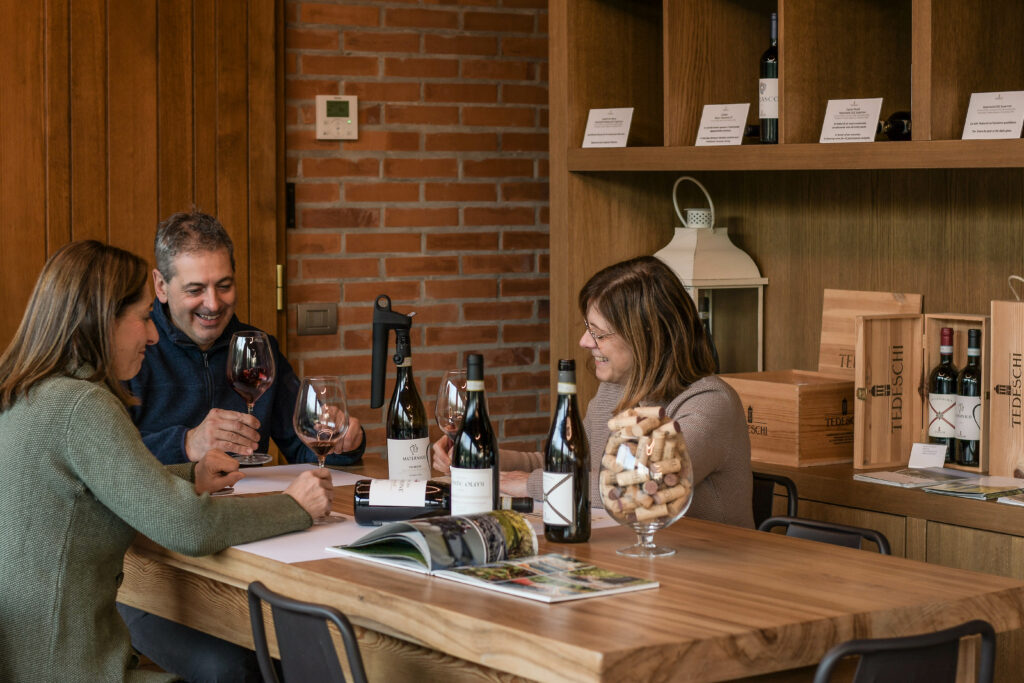

 中文
中文
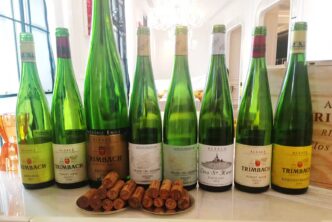
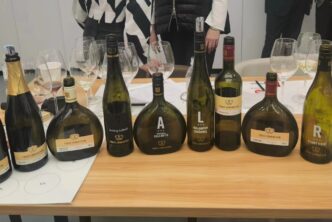
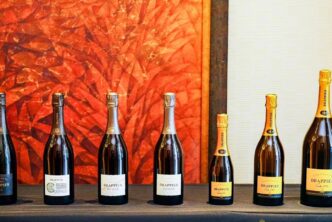
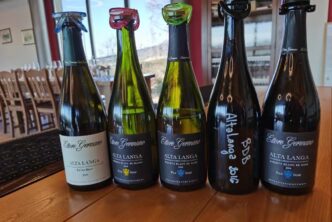
Great interview! Tedeschi is a stalwart, and the Monte Olmi is a fabulous wine. I also appreciate they approach they are taking to vinify a variety of native grapes and determine what might yield new and unexpected results. Bravo, Ian!
Thanks for your comments! I and the whole team here are happy you liked it! If you like, I have similar interviews coming up to one of the best producers in Valpolicella, Barolo, Barbaresco, Alsace, Burgundy, Borfeaux, Canada, Germany, New Zealand, USA and much more… stay tuned!
[…] Ecco qui l’articolo completo https://terroirsense.com/en/p/6267.html […]